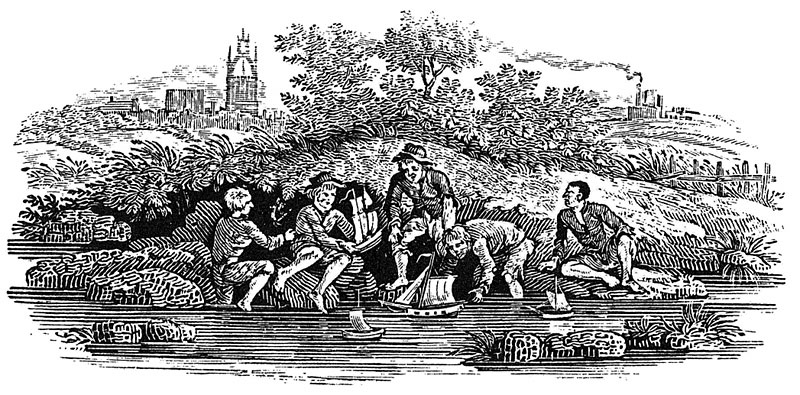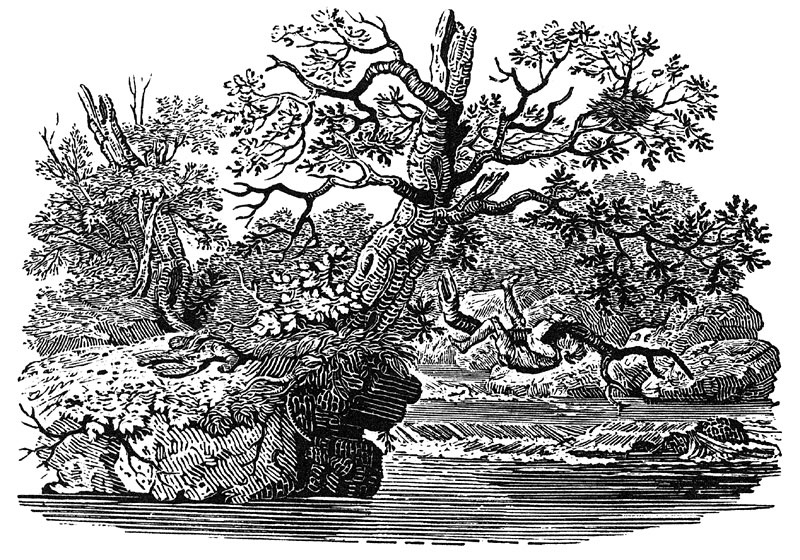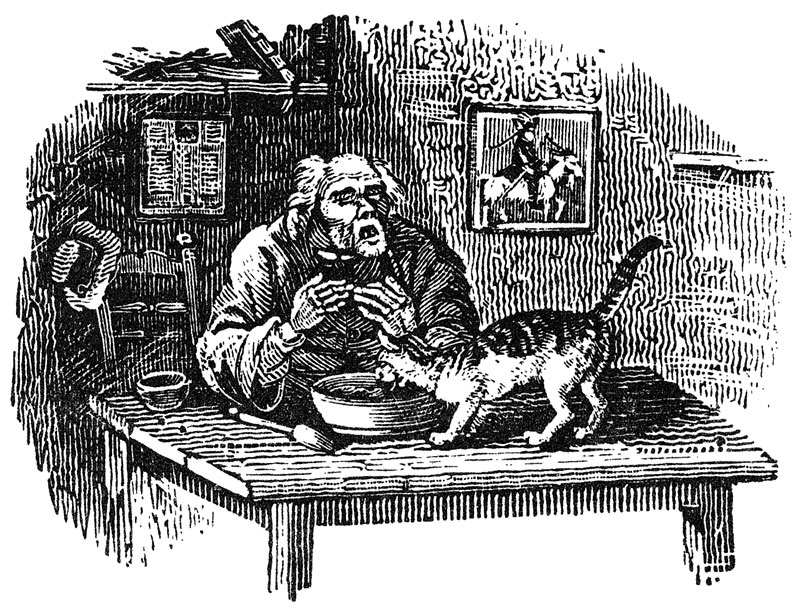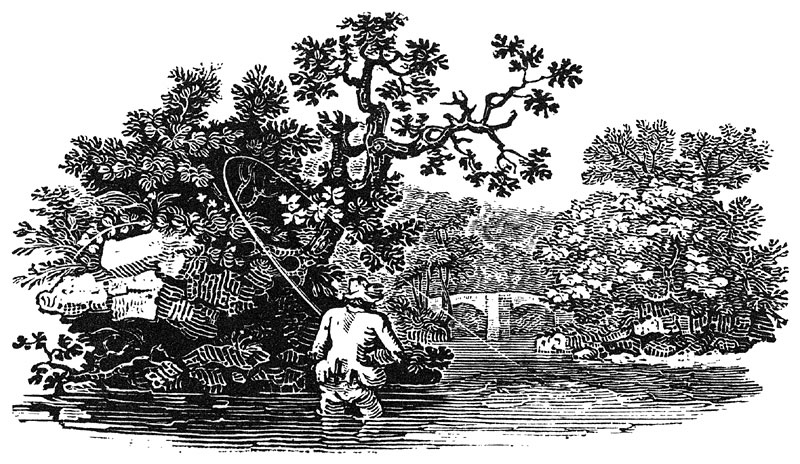Vignettes
tail-pieces or 'tale-pieces'.
Vignettes are supplementary images included in illustrated works as decorations to fill blank space on the page. They are not necessarily relevant to the main illustrations (which are here referred to as 'figures').
Tail-pieces are vignettes specifically placed at the end of sections or chapters.
Bewick sometimes referred to these punningly as his 'tale-pieces' because they often represent an event with narrative implications. Owing to the freedom of invention possible in these kinds of image Bewick took more pleasure in these designs than in any other of his works.
The page divides the samples shown into four categories:
firstly, those drawn and cut by Thomas Bewick himself;
secondly, those drawn by an apprentice but cut by Bewick;
thirdly, those drawn by Bewick but cut by an apprentice;
and fourthly, those drawn and cut by an apprentice.
Drawn and Cut by Thomas Bewick
'Boys and Ships' or 'Boys at the River' This vignette first appears on the title page of vol.II of the History of British Birds, 1804. The original pencil drawing by Bewick and the watercolour transfer drawing by Johnson are both extant.
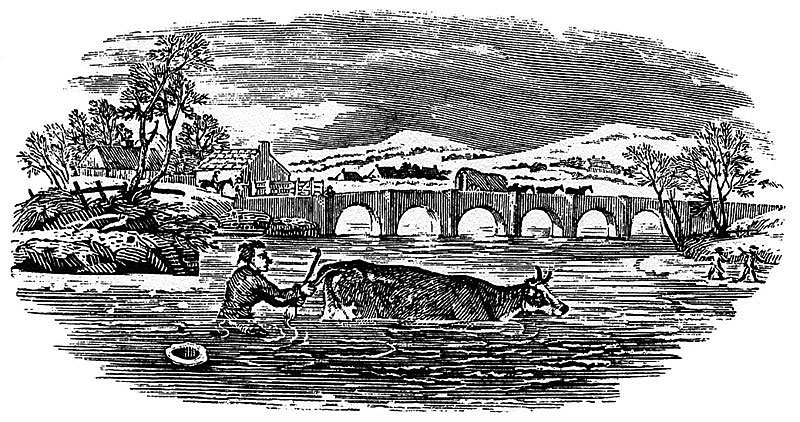
'Saving the Toll' This appears in History of British Birds, vol.II, 1804, p.173. The pencil drawing by Bewick and watercolour transfer drawing by Johnson are both extant.
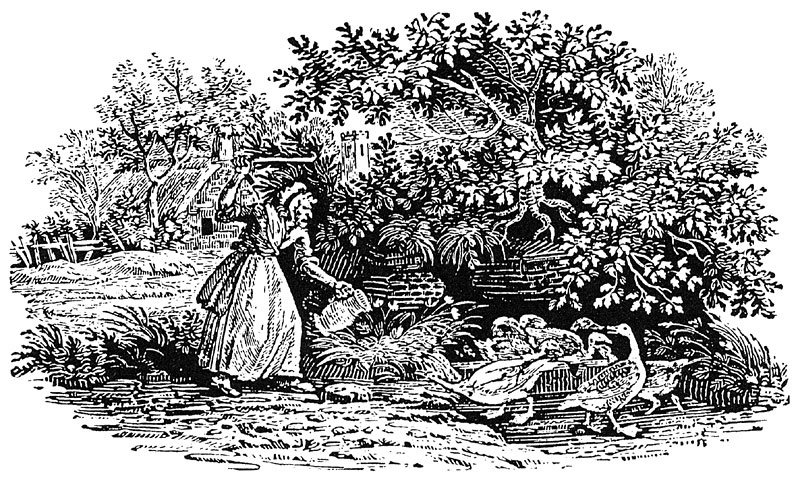
'An old woman chasing the geese away' 'Chasing the geese away' is on p.291 of vol.II of History of British Birds, 1804. Bewick's pencil study shows neither geese nor water jug.
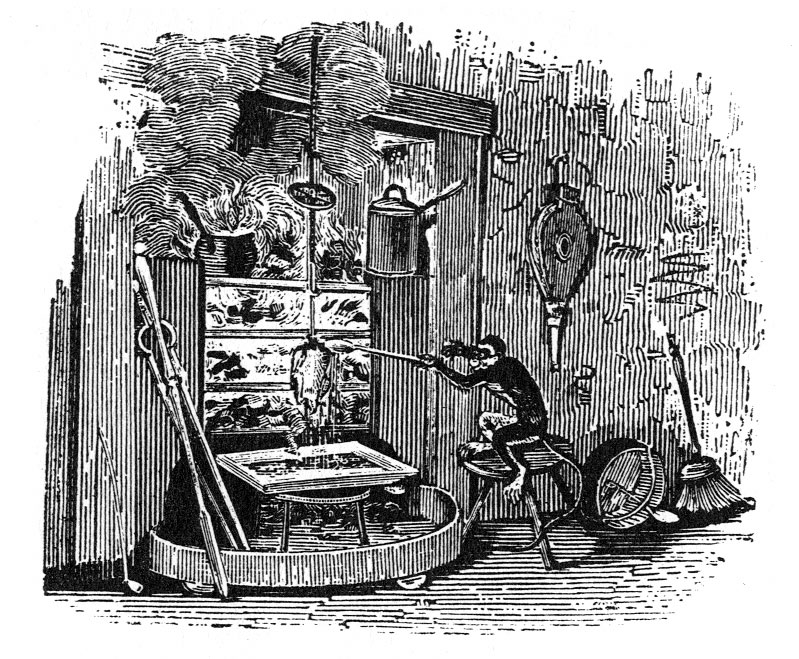
'Monkey basting the Roast' p.265 of vol.II of History of British Birds, 1804. The transfer drawing for this was by Bewick.
Drawn by Apprentice, Cut by Thomas Bewick
'A Boy and a Nest' is a tail-piece vignette for British Birds, II, 1804, p. 31, and was drawn by Robert Johnson.
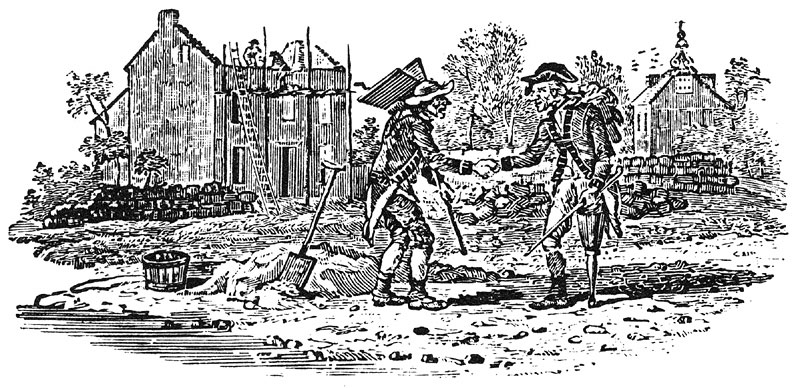
'Two Old Soldiers' is a head-piece vignette for p. v of the Introduction to British Birds,II,1804, and was drawn by Robert Johnson.

'The Angler at the River Pool' This tail-piece vignette called 'the Angler at the River Pool' for British Birds, II, 1804, p. 52, was also drawn by Robert Johnson.
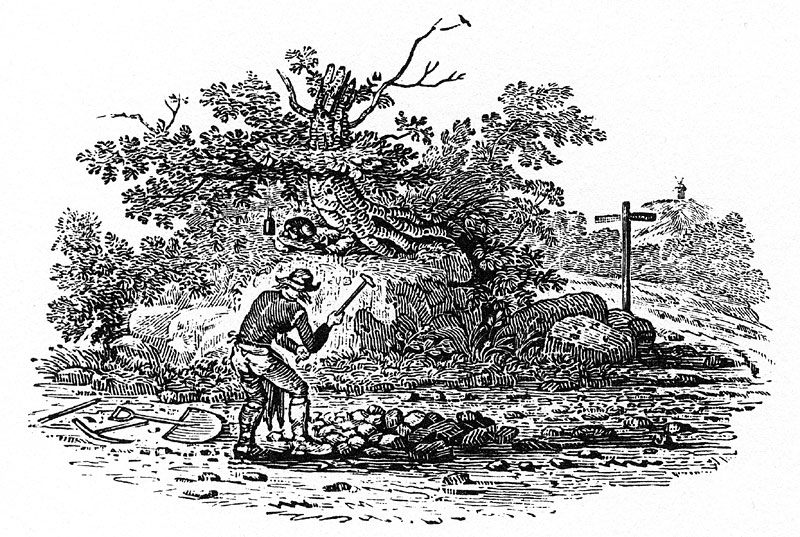
'A Roadman breaking Stones' was drawn by Robert Johnson and used in British Birds, I, 1797, p.26.
Drawn by Thomas Bewick, Cut by Apprentice
'Grace before Meat' The original pencil study for this headpiece vignette was by Bewick and the transfer drawing was by Robert Johnson. Luke Clennell engraved it on the wood for British Birds, II, p. iii.
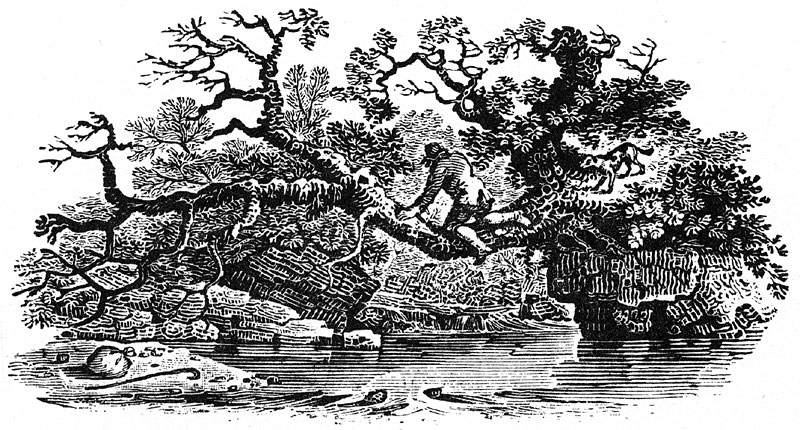
'Crossing a Stream' This tail-piece vignette was drawn by Bewick and engraved by Luke Clennell for British Birds, II, p, 3.
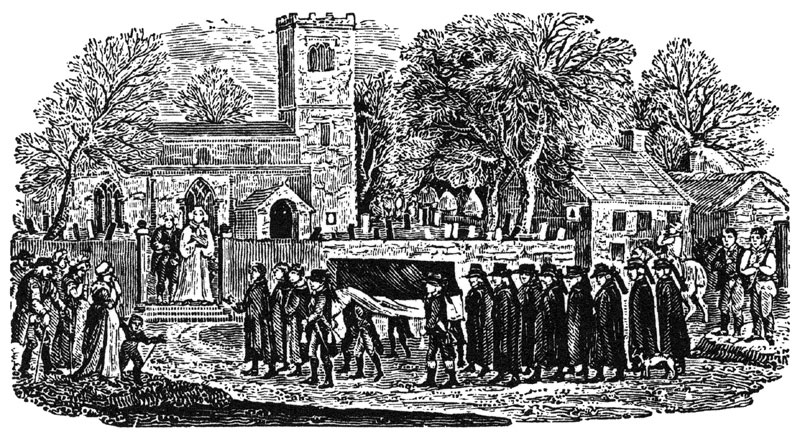
'The Funeral at Ovingham' appears as the final tail-piece for the Fables of Aesop, 1818, p. 376. The drawing by Bewick seems to have been engraved by William Temple.
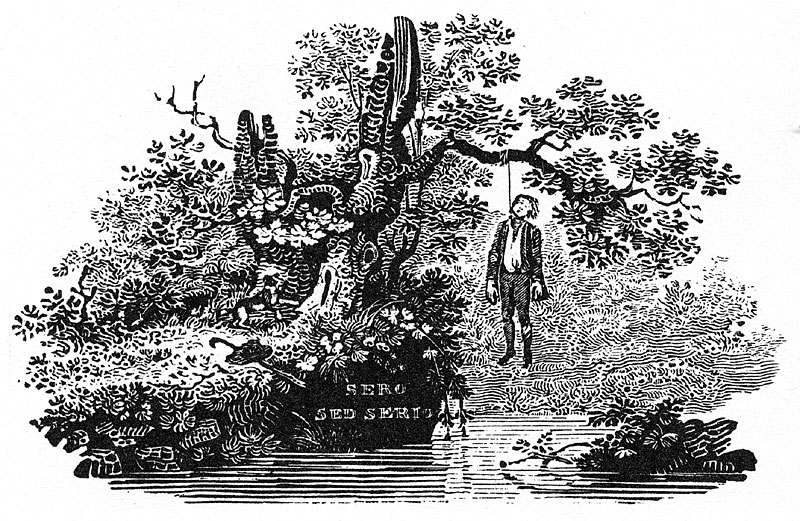
'A Suicide and His Dog' was first drawn in pencil by Bewick, made into a watercolour transfer drawing by R Johnson, and engraved by Luke Clennell. The motto Sero sed Serio means 'Too Late, but in Earnest'
Drawn by Apprentice, Cut by Apprentice
'The Wading Angler playing a Fish' was probably drawn by Luke Clennell, and the records show he engraved it for British Birds, II, 1804, p. 46.
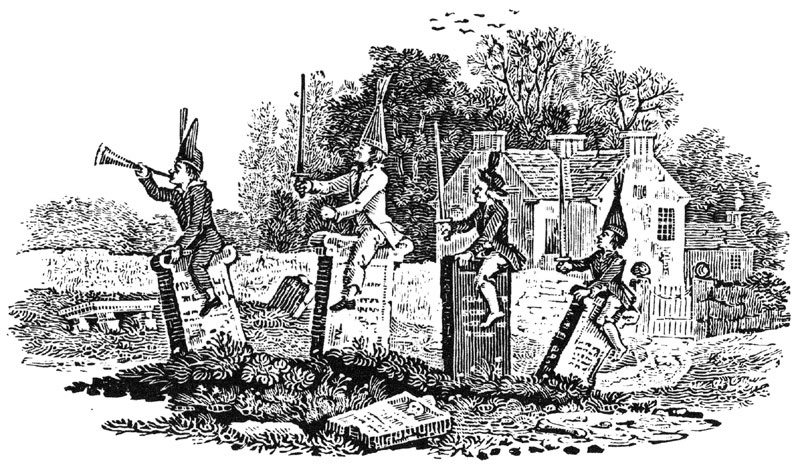
'The Churchyard Cavalry' was probably drawn by Luke Clennell but was certainly engraved by him for British Birds,II, 1804, p. 304.
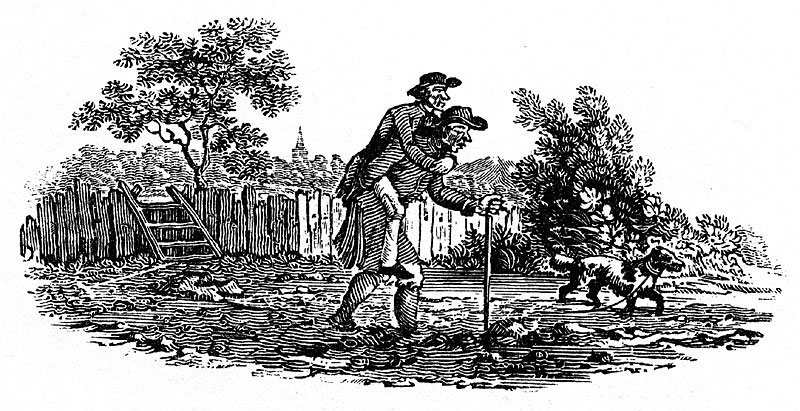
'Mutual Assistance - the Blind Man and the Lame' was drawn and coloured by R Johnson and engraved by Luke Clennell for British Birds, II, 1804, p. xvi
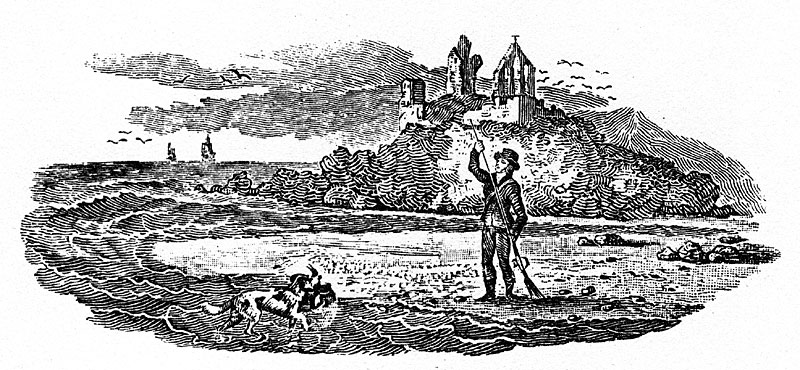
'A Sportsman and His Dog by the Sea Shore' was drawn and coloured by R Johnson and engraved by Henry White for British Birds, II, 1821, p.310.
